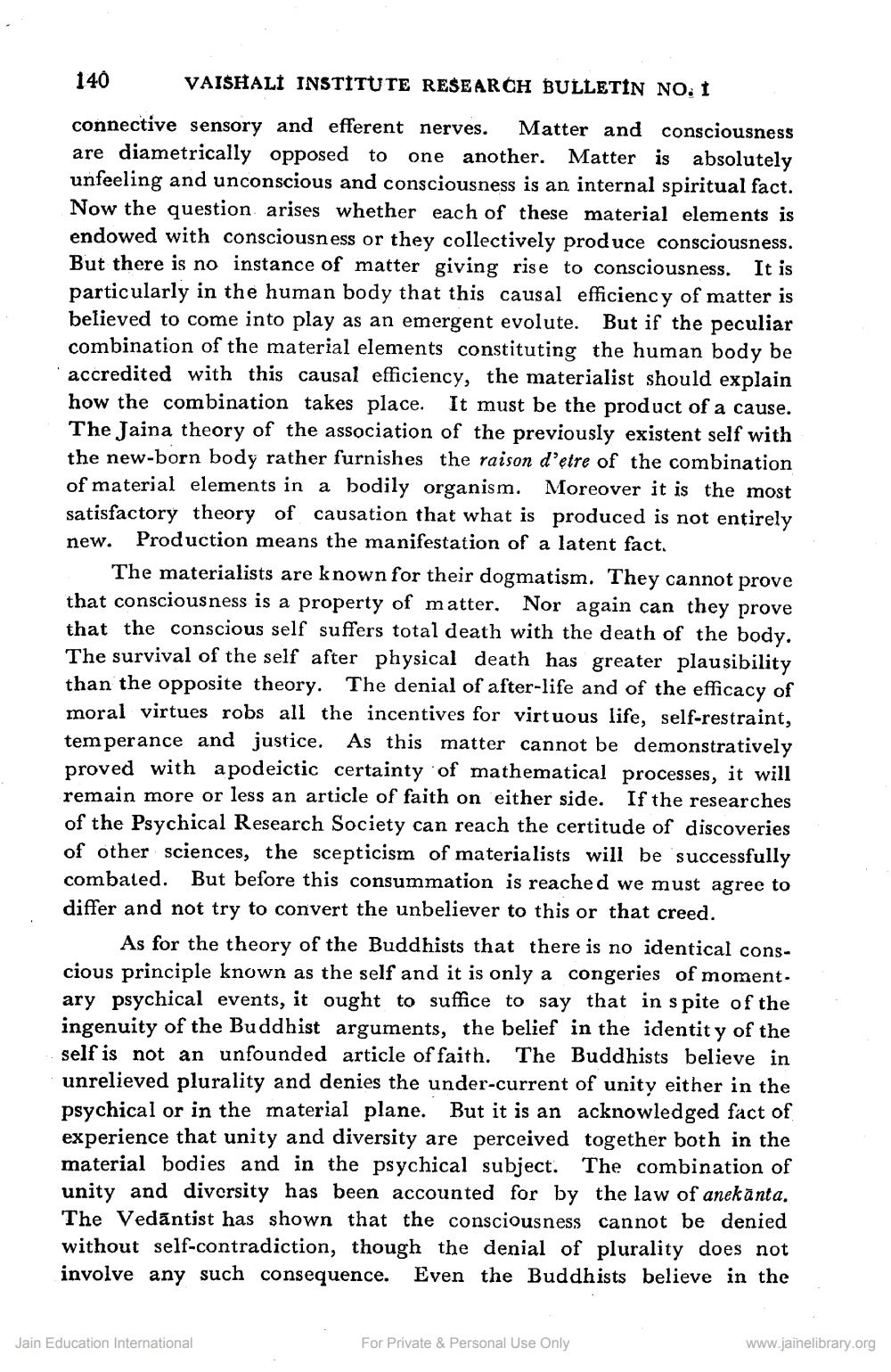________________
140 VAISHALI INSTITUTE RESEARCH BULLETIN NO. 1 connective sensory and efferent nerves. Matter and consciousness are diametrically opposed to one another. Matter is absolutely unfeeling and unconscious and consciousness is an internal spiritual fact. Now the question arises whether each of these material elements is endowed with consciousness or they collectively produce consciousness. But there is no instance of matter giving rise to consciousness. It is particularly in the human body that this causal efficiency of matter is believed to come into play as an emergent evolute. But if the peculiar combination of the material elements constituting the human body be accredited with this causal efficiency, the materialist should explain how the combination takes place. It must be the product of a cause. The Jaina theory of the association of the previously existent self with the new-born body rather furnishes the raison d'etre of the combination of material elements in a bodily organism. Moreover it is the most satisfactory theory of causation that what is produced is not entirely new. Production means the manifestation of a latent fact.
The materialists are known for their dogmatism. They cannot prove that consciousness is a property of matter. Nor again can they prove that the conscious self suffers total death with the death of the body. The survival of the self after physical death has greater plausibility than the opposite theory. The denial of after-life and of the efficacy of moral virtues robs all the incentives for virtuous life, self-restraint, tem perance and justice. As this matter cannot be demonstratively proved with a podeictic certainty of mathematical processes, it will remain more or less an article of faith on either side. If the researches of the Psychical Research Society can reach the certitude of discoveries of other sciences, the scepticism of materialists will be successfully combated. But before this consummation is reached we must agree to differ and not try to convert the unbeliever to this or that creed.
As for the theory of the Buddhists that there is no identical conscious principle known as the self and it is only a congeries of moment. ary psychical events, it ought to suffice to say that in spite of the ingenuity of the Buddhist arguments, the belief in the identity of the self is not an unfounded article of faith. The Buddhists believe in unrelieved plurality and denies the under-current of unity either in the psychical or in the material plane. But it is an acknowledged fact of experience that unity and diversity are perceived together both in the material bodies and in the psychical subject. The combination of unity and diversity has been accounted for by the law of anekānta. The Vedāntist has shown that the consciousness cannot be denied
self-contradiction, though the denial of plurality does not involve any such consequence. Even the Buddhists believe in the
Jain Education International
For Private & Personal Use Only
www.jainelibrary.org




